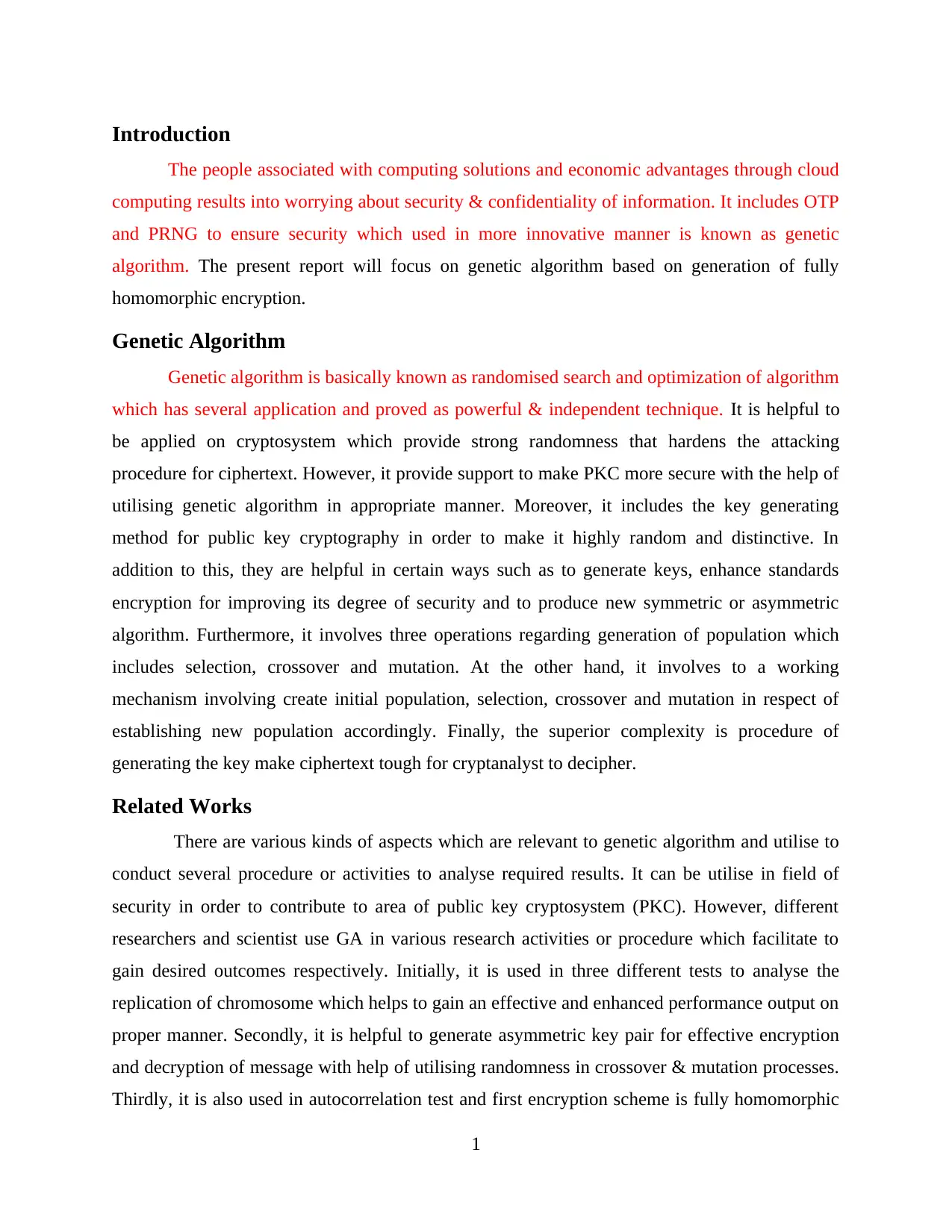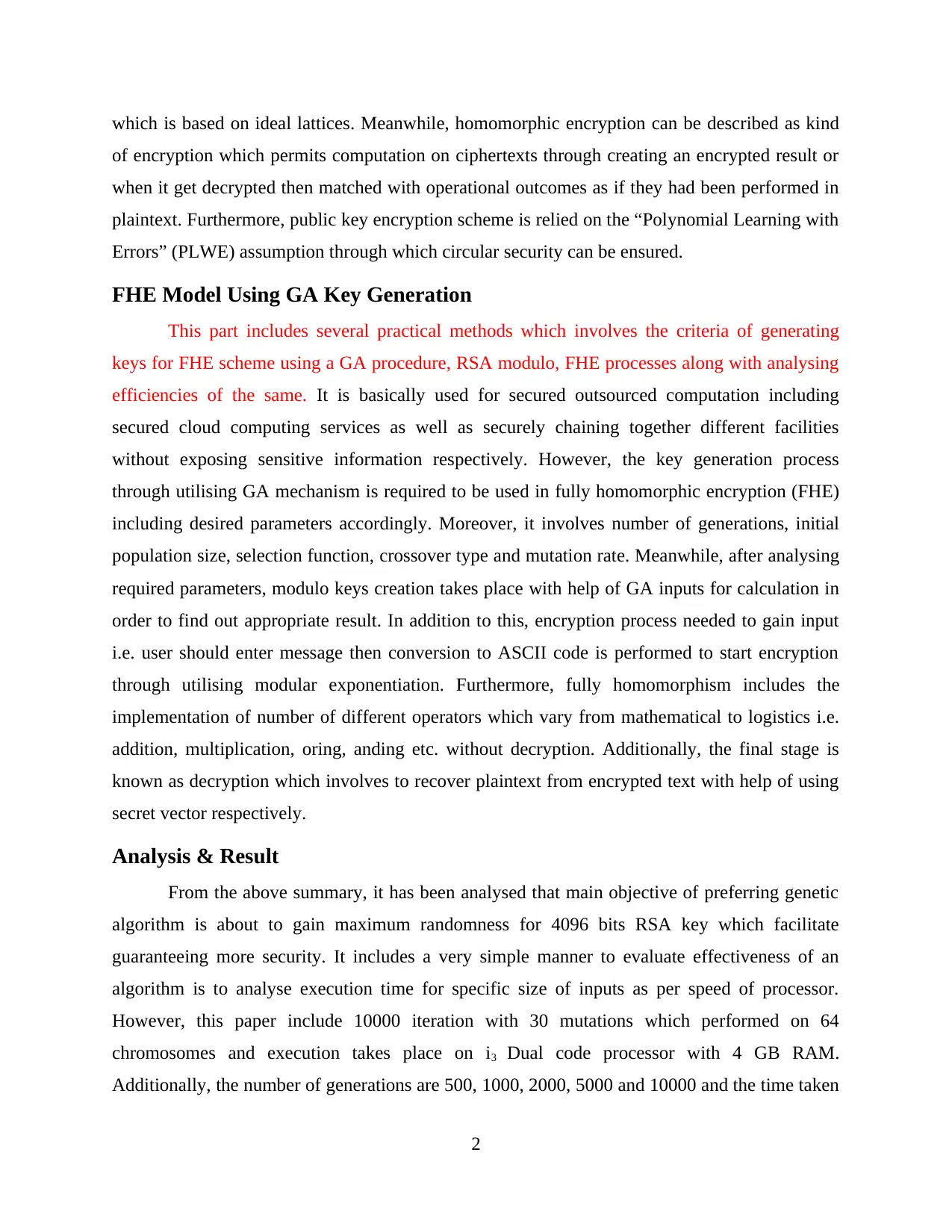Genetic Algorithm for Fully Homomorphic Encryption Model Analysis
VerifiedAdded on 2020/10/22
|5
|869
|120
Report
AI Summary
This report delves into a genetic algorithm (GA)-based model for Fully Homomorphic Encryption (FHE). The introduction highlights the importance of security and confidentiality in cloud computing and introduces the use of GAs for enhanced randomness and security in cryptographic systems. The report explains the concept of genetic algorithms, emphasizing their application in key generation for public key cryptography, and discusses the GA operations of selection, crossover, and mutation. Related works explore the use of GAs in public key cryptosystems, key generation, and homomorphic encryption. The FHE model section details key generation using GA, including parameters like generation numbers, population size, and crossover types, followed by the encryption and decryption processes. The analysis and results section evaluates the GA's effectiveness, focusing on execution time for generating a randomized 4096-bit RSA key, and discusses the impact of population size and generation numbers on complexity. The report concludes by emphasizing the GA's role in enhancing security through increased randomness in key generation, crucial for secure cloud computing and other applications.
1 out of 5











![[object Object]](/_next/static/media/star-bottom.7253800d.svg)